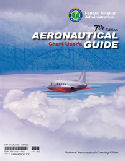Flight Safety Resource for Pilots



--------------------------------------------------------------------------------
STABILIZED APPROACHThis is critical in the professional cockpit. Many airlines have systems on the aircraft that will record when an un-stabilized approach was conducted. If a pilot performs an un-stabilized approach he or she will usually receive a phone call asking for an explanation of why. This is how serious the airlines consider using a stabilized approach. A stabilized approach means at a predetermined point and beyond the aircraft is “in the window”. Different companies have different parameters. They may include aircraft configuration, speed, minimum power settings, and vertical speed, to name a few. An example might be: Outer Marker – Aircraft on the localizer and glideslope, gear down, flaps approach, speed less than 140 knots. 500 feet above decision height or above touchdown if field in sight – Aircraft still on localizer and glideslope, gear down, flaps full, speed Vref + 15 or less. Note: This is the “window”, should your speed vary by 15 knots or more or should you loose the loc or glideslope by one dot, execute a missed approach or go around. Most aircraft that run off the end of a runway on landing did not shoot a stabilized approach. The urge to salvage the approach and avoid a go-around was too strong. “It was VFR and it looked like we could do it”, or “we were a little high but I thought we could get down”. Some pilots occasionally get by with this, but as a company or as a group if this is allowed it will result in accidents on a regular basis. In addition a stabilized approach is one of the primary means of wind shear recognition. When you are on localizer, glideslope and “on speed” it is easy to recognize any variations. Early recognition is critical to successful wind shear avoidance and recovery. What all this means to you is that if you always use a stabilized approach you can probable avoid the number one accident. According to the FAA: FAA Order 8400.10, volume 4, chapter 2, section 3, paragraph 511 discusses stabilized approaches. Paragraph 511
defines a stabilized approach as "Maintaining a stable speed, descent rate, vertical flight paths, and
configuration." The paragraph also stresses the importance of a stabilized approach stating, "Operational
experience has shown that the stabilized approach concept is essential for safe operations with turbojet aircraft,
and it is strongly recommended for all other aircraft." Configuration control — With complex airplanes, a good practice is to approach the FAF with the first increment of flaps extended (to help slow the airplane), then lower the landing gear at glideslope intercept. The resultant drag will help to begin the descent down the final approach course.
If you have found this page from a web search, learn more at Procockpit.com today! |





Home | Out Software | Free Training | F.A.Q. | About Us | Contact Us | Photo Gallery | Site Map | Links | Gift Shop | Product Testing | Weather
Copyright 2002-2007 Procockpit. All Rights Reserved.




